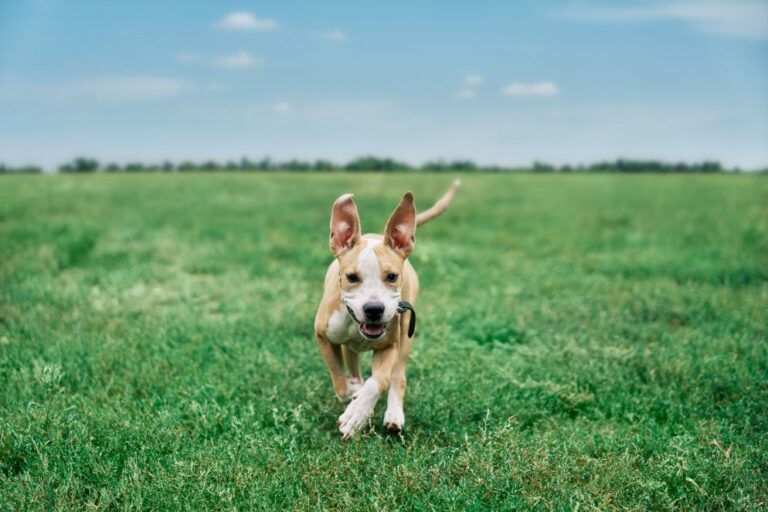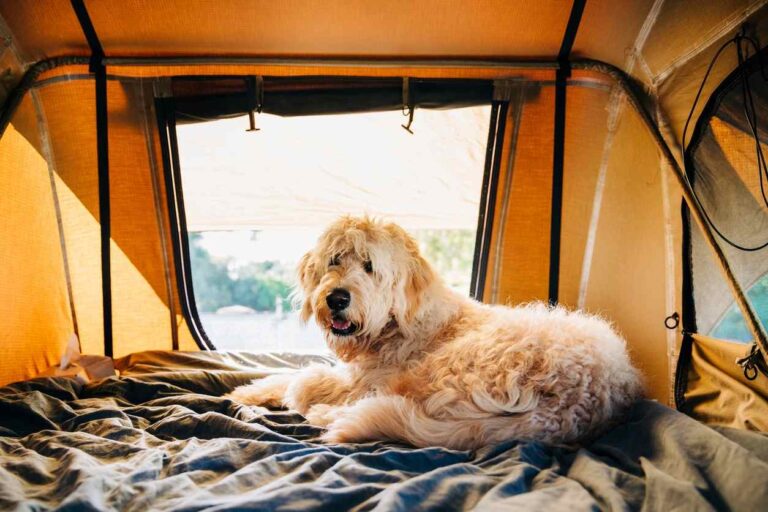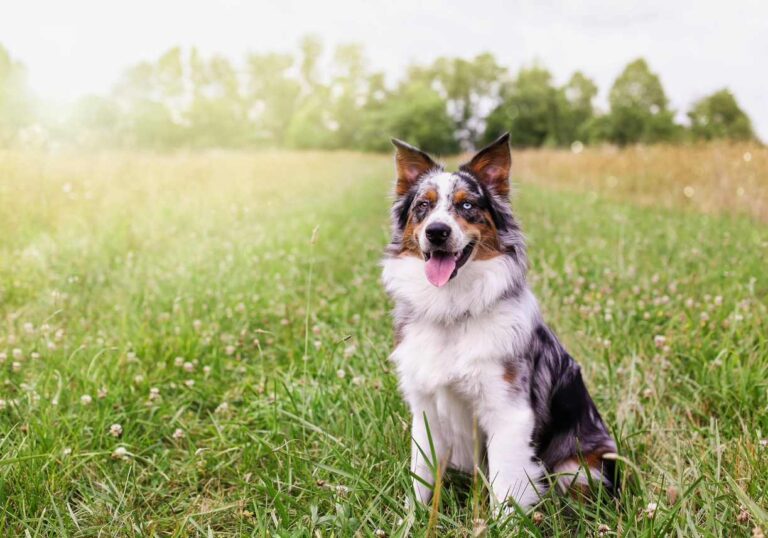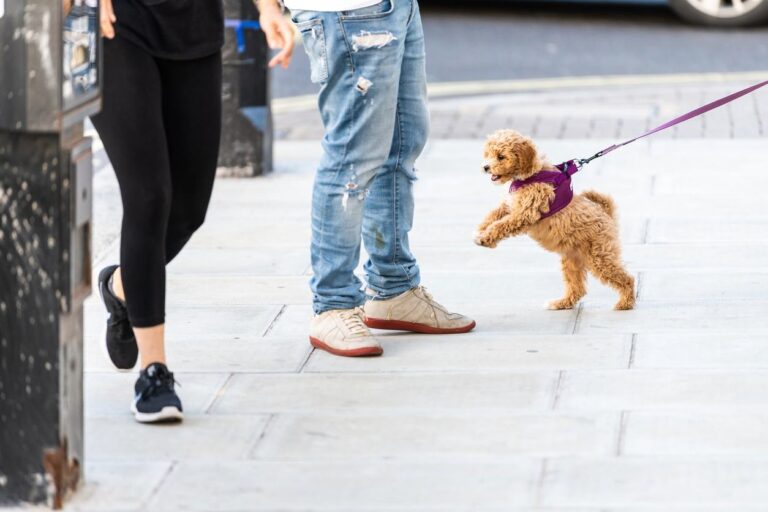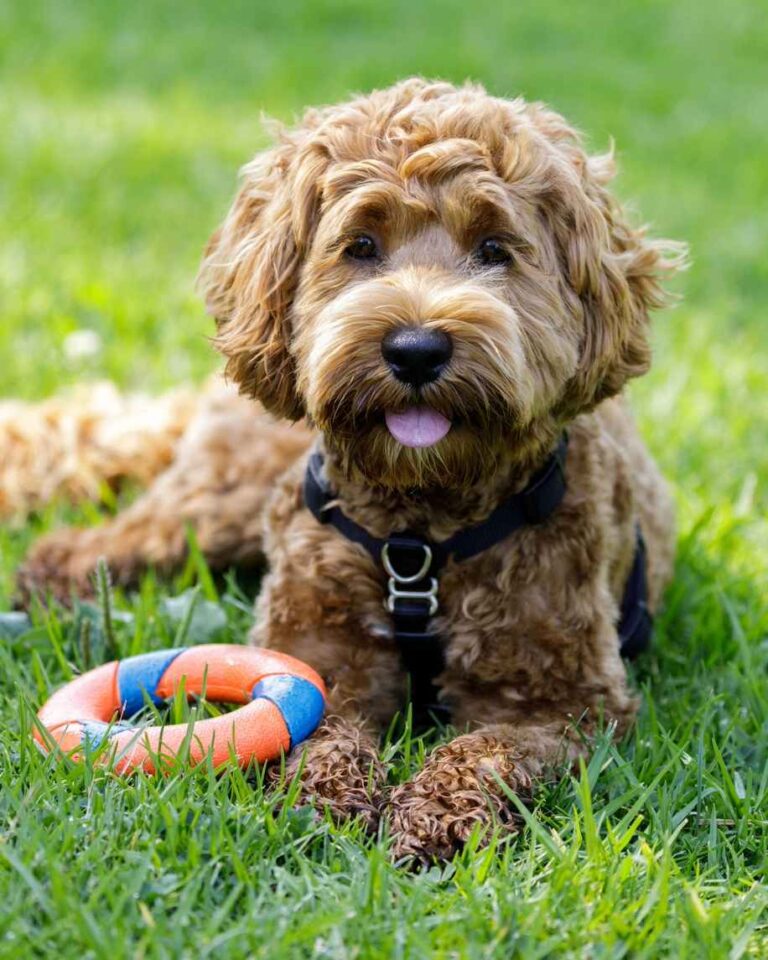Coming when called is one of the most important behaviors a dog can have. From wanting to give them attention and petting to removing them from a potentially unsafe situation, asking your dog to come when called, also known as recall, needs a solid foundation when building the behavior. A strong recall is also one of the hardest skills for dogs and humans alike to shape. To help get you started, we are going to share a few tips and tricks we have to start practicing at home with your dog!
What you will need
- Fitted collar
- 6ft leash
- 50ft, non retractable long line
- Treats
- Treat pouch
Choosing the right reward
In animal training, we have a widely known saying; Reinforcement is in the eye of the beholder. This means what one dog may find rewarding, another dog could turn their nose up to it. It also reminds us that what we as owners and handlers would like to reward our dogs with may not be effective enough to increase the likelihood of the behavior happening again in the future. Small, dry, training treats might be a quick and easy choice for us to give our dogs, but it may not grab their attention when they start working around enticing distractions. When focusing on recall, you should choose a treat that your dog finds exciting!
Most dogs prefer a savory treat with high moisture content as they are easier to smell. Simply cooked meats with no other ingredients like boiled and shredded chicken or deli meats are the first choice for us. Depending on your dog’s stomach sensitivities, hot dogs and stringed or diced cheeses may be other great options.For medium and large dogs, we recommend cutting the treats into pieces that are nickel sized. For small dogs, smaller treats will help them not fill up as fast and allow for more repetitions.
Choosing the right environment
Start at home, in an open space and then work up to more difficult spaces as they become successful. Choose a room with little stimuli (no other people or animals, minimal sound, etc.). If you don’t have a room large enough to practice recall with enough space, find an outside environment that is as quiet as possible, and preferably on a flat surface. (Be sure to check the temperature of the concrete before working your dog!) Quiet neighborhood streets or empty tennis courts are usually a great secondary option.
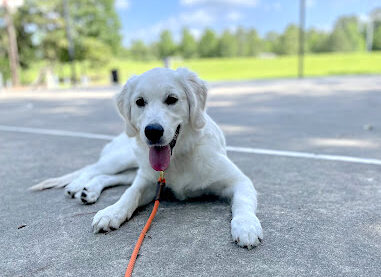
Shaping the initial behavior
- The first step of recall is to get your dog moving towards you. With your dog on a 6ft leash, take a treat and hold it in your hand so it is easily visible to your dog, and let them smell it. As soon as they take interest or try to take a bite of the treat, say their name then quickly step back 5-10 feet, keeping the treat at nose-level to lure them. When you stop moving and your dog has approached you within 1 foot, say “good” and give them the treat. This is one trial.
- Trainer Tip: Keep the rule of 3-5 in your head when shaping and strengthening behaviors with your dog. Practice each trial 3-5 times with as little change in stimuli as possible. Once your dog has had 3-5 successes in a row, you may increase the criteria!
- Once your dog is in on the game and is eagerly keeping pace with you as you back up, you can start adding autosits and collar grabs before giving the reward.
- After you stop moving and your dog meets you, but before you give them the food, lure them into an autosit. This will help teach your dog that recall is about working for you, not just swinging by to say hi before carrying on to the next interest.
- After your dog has sat, grab their collar, then give the treat before letting go. The collar grab is an essential part of recall, especially once you transition to off leash recall or practice in dog parks. For small dogs, you may condition being picked up as an alternative to collar grabs!
Increasing criteria and communication
- Now that your dog has the basic idea of recall learned, you can start to add your prompt from a distance. Let your dog move to the end of the leash. When at the furthest point without tension, say your dog’s name, then recall them. (“Fido, come!”) The clearer the prompt, the better!
- Next, you will bridge when your dog attends to you. A bridge is a word that marks the moment your dog has done something correct. We recommend using, “Good!”
- Once your dog has made it to you, provided an autosit, had its collar grabbed, and been given a treat, you may say a release word to your dog. We use “Free!” The release word lets your dog know that they are done working for now and have the freedom to do whatever they would like.
Incorporating the 4 “D’s”
When your dog has shown consistent understanding of your recall cue on the 6 foot leash in your quiet environment, it’s time to start working on the 4D’s: Distance, Distractions, Duration, and Disappearing.
Distance
When increasing distance, do so slowly. If you have been working on a 6 foot leash, break out your long line, and give your dog 10ft of the line. Recall your dog and make sure to reel in the line as they approach. Once your dog has 3-5 repetitions of success with each distance, add 5ft of line.
Trainer tip: Remember, distance works both ways! When working around moving distractions, start with greater distances away, and decrease the distance from the distraction with success.
Distraction
There are millions of distractions that your dog can encounter in the world! The first one is going outside if you have not already. As they are successful, you can try calling your dog after 1-2 seconds of sniffing. Once surfaces are no longer difficult for your dog, you may begin adding additional stimuli such as neighbors passing on the sidewalk while your dog is in the front yard, dogs inside a dog park while you and your dog are on the outside of the fence, squirrels foraging in your neighbors yard, etc.
Duration
When starting recall, we recommend quick repetitions. Adding more time between trials will serve as one form of adding duration difficulty.
Disappearing
The final D, Disappearing, will be covered below in the Recall Games section! Look for
“Hide and Seek.”
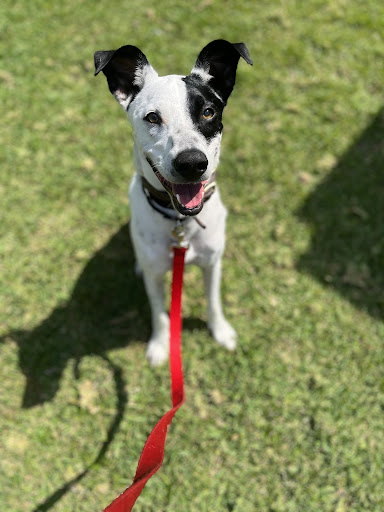
Troubleshooting: What to do if your dog does not come to you
- Decrease your criteria – If you notice your dog is getting distracted easily, make one of the 4 D’s less challenging until they are successful. Then work your way back up.
- Use something tastier – Does your pup seem motivated? If not, you may consider using something a little tastier or even a ball!
- Take a brain break – If you are losing compliance from your dog, consider how many times you have asked for the cue. Your dog may need a brain break from repeating the same activity over and over. Play with them for a minute, and always end on a successful trial.
- Be ready to reinforce – If you are going to ask for “Come” be ready to reinforce the behavior with a treat, and have your dog on a long line. You don’t want to teach your dog that they can just blow you off. Recall needs to be reinforced every time in order for your dog to eventually graduate to off leash recall.
Come when called games: Make recall fun!
- Puppy ping pong: This is a fantastic game for couples and families who are working on strengthening recall to each family member. It is also a fun way to get kids involved! Have your food reinforcer, and practice taking turns calling the dog to each member one by one. Make sure to have each member release the dog before the next prompt.
- Hide and Seek: The final D, Disappearing! When playing hide and seek, start at home. After practicing recall insight, sneak just out of sight while your dog isn’t looking, and hide around a corner. When you hear your dog moving, bridge “good!” and continue praising until your dog finds you! A game of toy play or lots of petting is often the perfect reward for finding you, and a great way to begin changing your reinforcer. You may also practice this outside by hiding behind trees! Make sure your dog is on leash and at a safe distance from any streets or other dangerous stimuli.
As you practice, and with repetition and consistency, you will both be on your way to creating a potentially life-saving skill. One that solidifies your bond with each other. If you need help with certain distractions or believe your dog is ready to graduate to off leash recall, reach out to our Beyond the Dog in Houston team.
